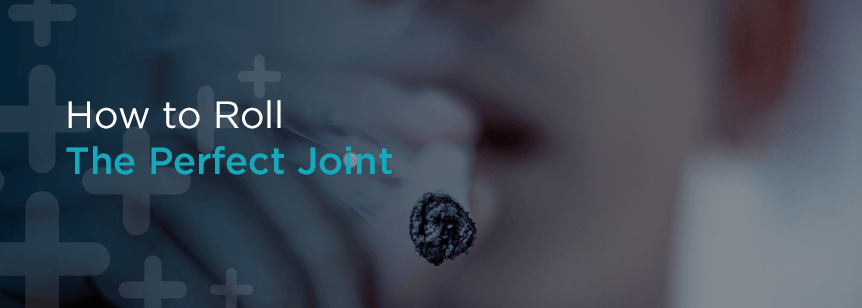
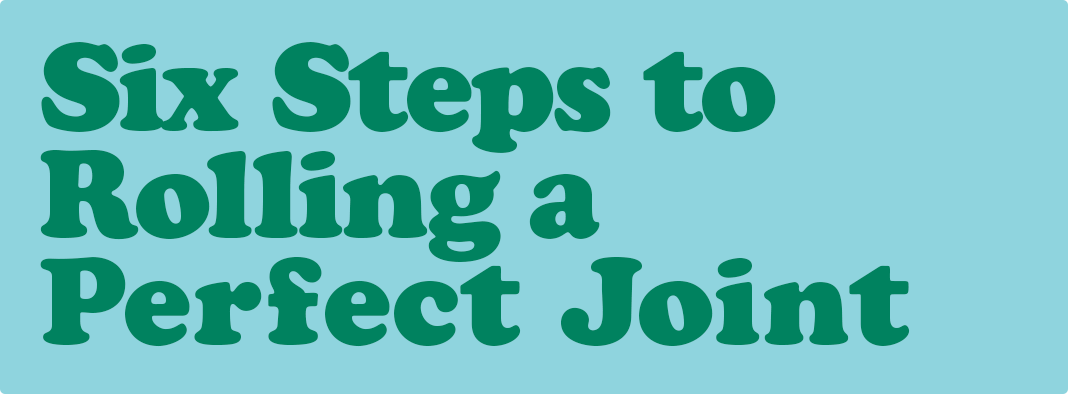
With so many different available sources for medical marijuana for various conditions like anxiety, chronic pain, cancer, and others, it can be daunting to know where to start. Should medical marijuana patients go with bud…or tinctures…or oil? Once they’ve worked with a licensed marijuana doctor to determine the best source and strain for the cannabis, what then?
We worked with Hawaiian herbalist and international traveler River to give us tips we could share on how to roll a joint.
“There’s just something about smoking a joint,” says a bronzed, shirtless River, a wilderness expert and herbalist who’s been extracting rare tinctures from the jungle as he canoes his way through Kauai. He preferred not to give his last name because “until it’s really legal you just never know, man.”
Right now we’re on the northernmost beach on the northernmost crest of the Hawaiian Islands, nestled against the untouched Napali coast, just before sunset.
“It’s the feel of it—the way it burns, the way it tastes, the way it perfumes the air. And this is about the best place in the universe to smoke it, too” the former chemist and entrepreneur assures me as we sit down in a small pavilion overlooking the Pacific. River’s what you’d call a connoisseur of cannabis, and about to roll what he claims will be a next-level, “Jesus-raising” joint for the purposes of demonstration, and later, for meditating under a fiery sky).
Though rolling a fatty may not be considered the most economical of all ingestion methods (a pipe, for example, can be packed lighter and extinguished more easily), a joint’s small size, weight, and portability—not to mention how evidence of its existence goes up in flames as you smoke it—is definitely part of the appeal for a man-on-the-move like River.
“Besides, it’s fun,” he says as he lays out his materials. “With all this high-tech vaping gear and whatnot—there’s just something so cool about rollin’ a 70’s style doobie.”
Here’s River’s step-by-step guide to crafting a perfect, old-school joint.
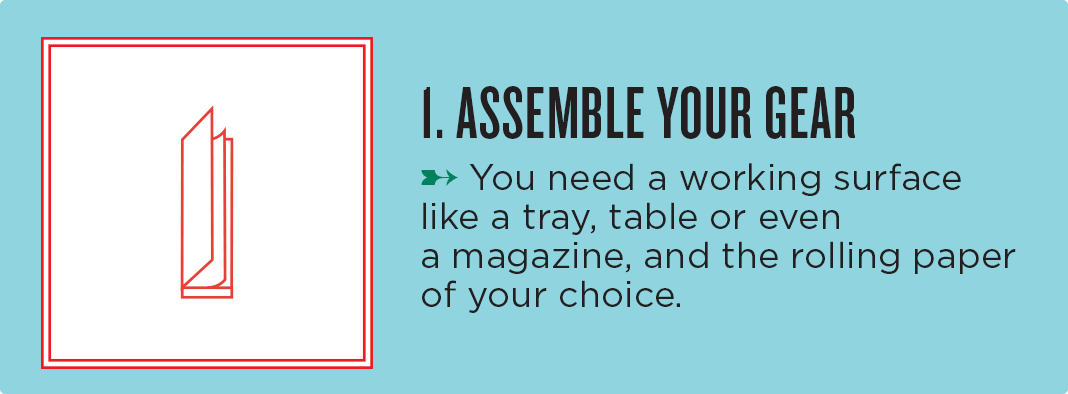
You’ll need a suitable space (River does NOT recommend a moving car or camper van, or anywhere that doesn’t include a working surface like a tray, table, or even a magazine to catch spills). You’ll also need to decide what sort you’re into: a small, hemp-paper joint, a tobacco-laced spliff, or a cigar-like blunt. Each is defined by its cannabis-to-tobacco ratio and/or wrapping method. With all the rolling paper types out there, River recommends going with a size and burn rate that makes sense for your session, whether passing a joint around a group, or smoking by yourself.
And though River claims it’s possible to roll a joint without a filter (also sometimes called a “crutch”)—“that, my friend, would not be the perfect joint” — they can add stability, cool the smoke, and reduce your risk of burning your fingers. You can buy pre-made cardboard filters at any smoke shop, or just use any scrap of paper or a business card by folding the paper accordion-style a couple times, then rolling it up. For now, set the filter aside.
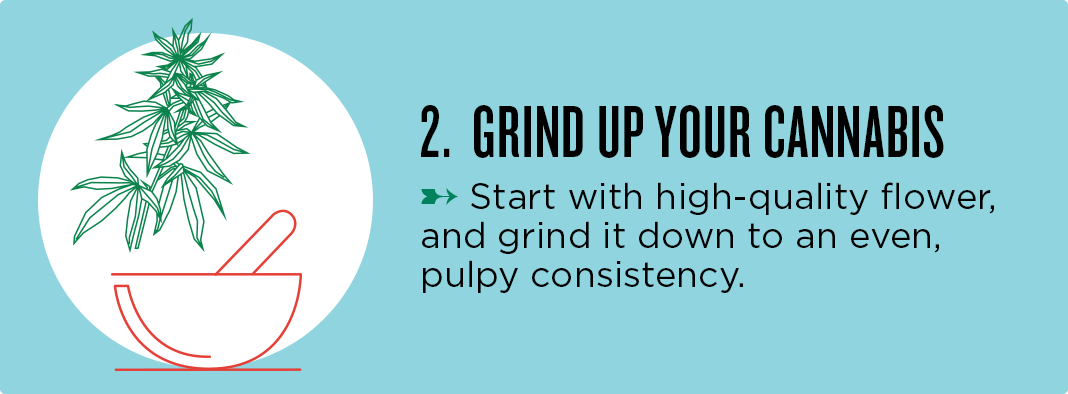
River recommends starting with high-quality bud and grinding it into an even, pulpy texture so the joint burns smoothly and evenly. In his travels River uses a lightweight, single-chamber plastic grinder, but he prefers a heavyweight kief-catcher given the option. Just be careful not to overgrind, because the weed could get powdery or harsh, losing some of its flavor.
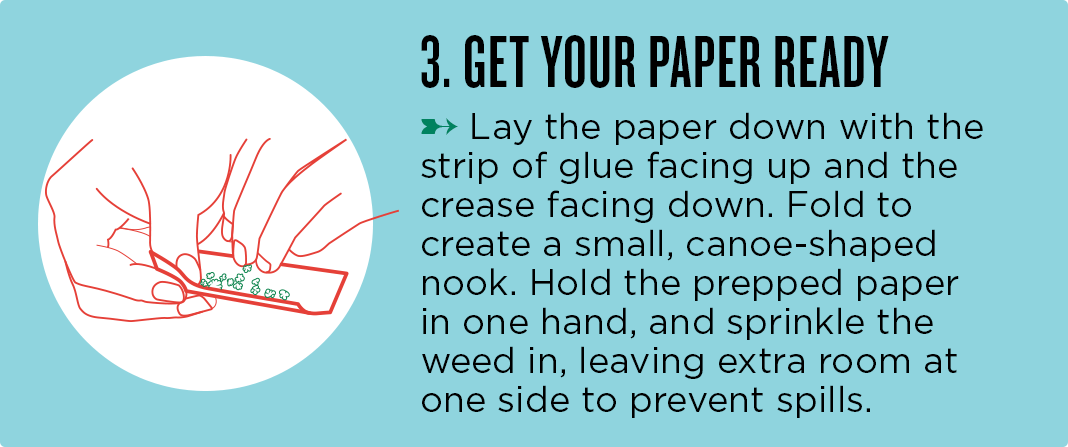
On one side of the rolling paper is a strip of gum or glue. This should face UP, with the crease facing down. A couple of folds will help to create a little nook, or a canoe-like space, where the weed will go. If you’re using a filter, place it inside on one end, lining it up with the paper. And then, holding all of this in one hand, sprinkle in your weed, leaving a little room on one side to avoid spillage as you roll.
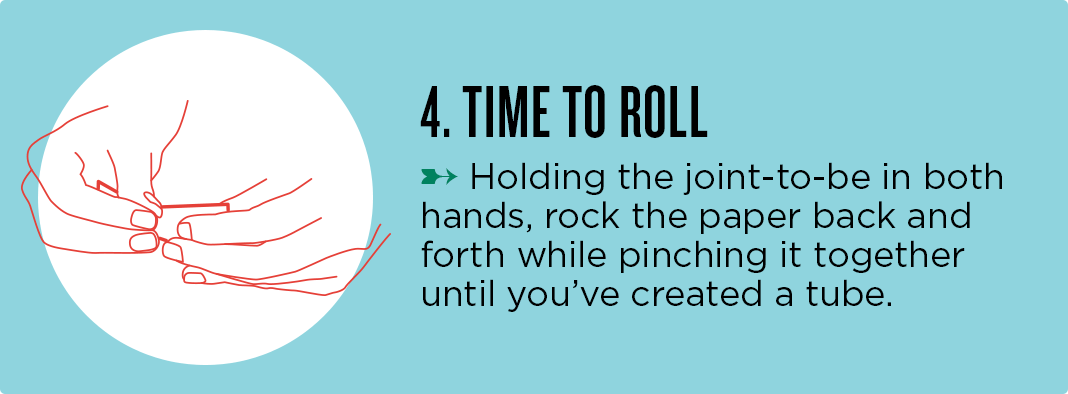
“Now, this is where the magic happens,” River says. He starts rocking the paper back and forth, pinching it together at the same time to create a cone-like shape. He recommends tucking the paper snug against the filter as you do it, rolling and pinching the whole thing between thumb and fingers to create a nice, tight little tube, right up tothe edge of the glue. “And sure, you could get a little rolling machine to help you do this part—but why? When your fingers can do it all for free?”
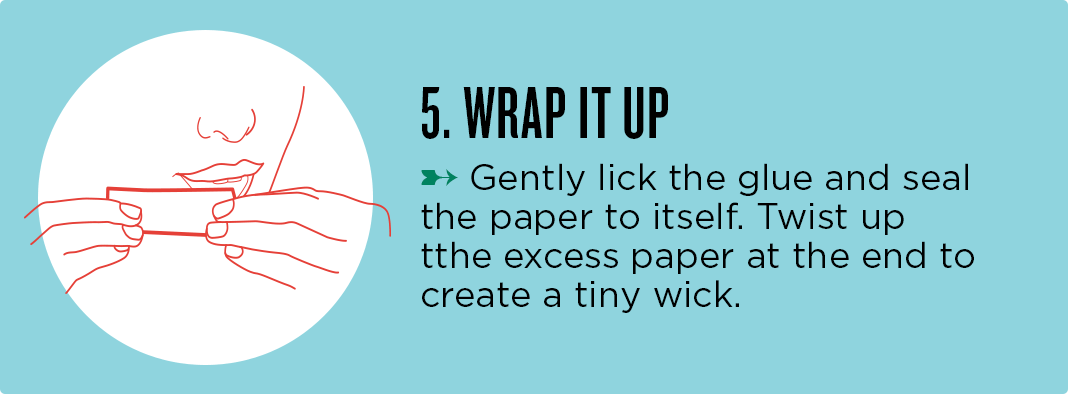
To finish, gently lick the glue and seal the paper to itself. And then finally, to “clean it all up a bit,” River grabs the end of a pen cap, packing the weed down on one end, and adjusts the filter again (it slides right in). He then holds the excess paper on the other end, and starts swinging it around a bit, sort of like a pack of sugar. “This is to get it all a little tighter so it burns better.” When he’s done he inspects the joint, tears off a bit of excess paper, and twists whatever’s left into a tiny wick to hold the weed inside until it’s time to smoke it. “Some people like to use a hemp wick to light and burn a joint and it’s true, butane lighters are sort of harsh, hemp burns cooler—but out here,” he sweeps his arm across the sky at the glorious scenery for effect, “I focus on the basics. And this baby is gonna burn just fine.”
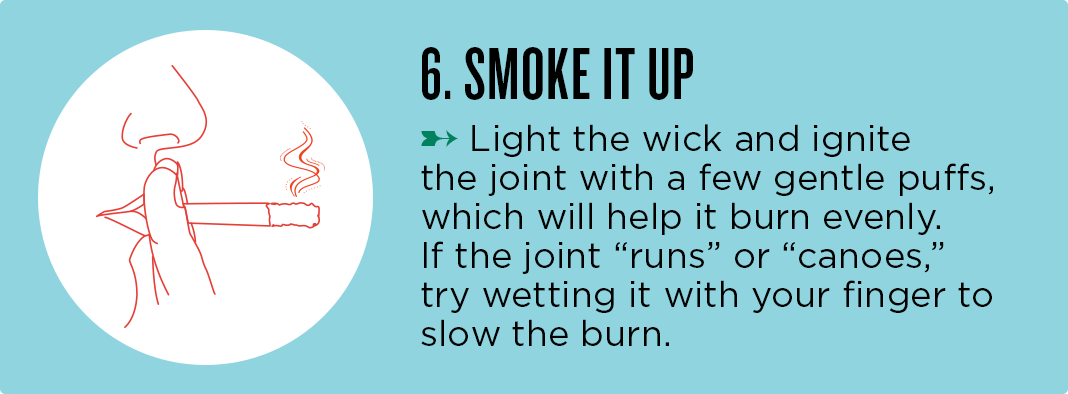
Though I don’t need River to tell me what his favorite step to rolling a joint is, he tells me anyway: smoking it. But first we talk about what to do if a joint “runs” (burns lengthwise along one side) or “canoes” (burns so much on one side it opens up), which can be a waste of both time and weed. This could be because the joint was rolled too tightly or too loosely, or the flower may not be ground up enough.
“The good news is that you can usually fix a run by wetting it slightly with your finger to slow the burning,” River says.
But if you have done your job right, you’ll be able to sit back and enjoy. “And that’s why we all came out here, no?” River says as gazes out over the sublime Pacific, ready to light up.
Sarah A Lybrand is a writer specializing in lifestyle, health, finance, cannabis—and fun. She’s written for Yahoo Finance & Shine, Bust, Juno, MarketSmiths and Toast Media, among many others.
No Information on MarijuanaDoctors.Com should be used to diagnose, treat, prevent or cure any disease or condition. You can view our Full Disclaimer here.